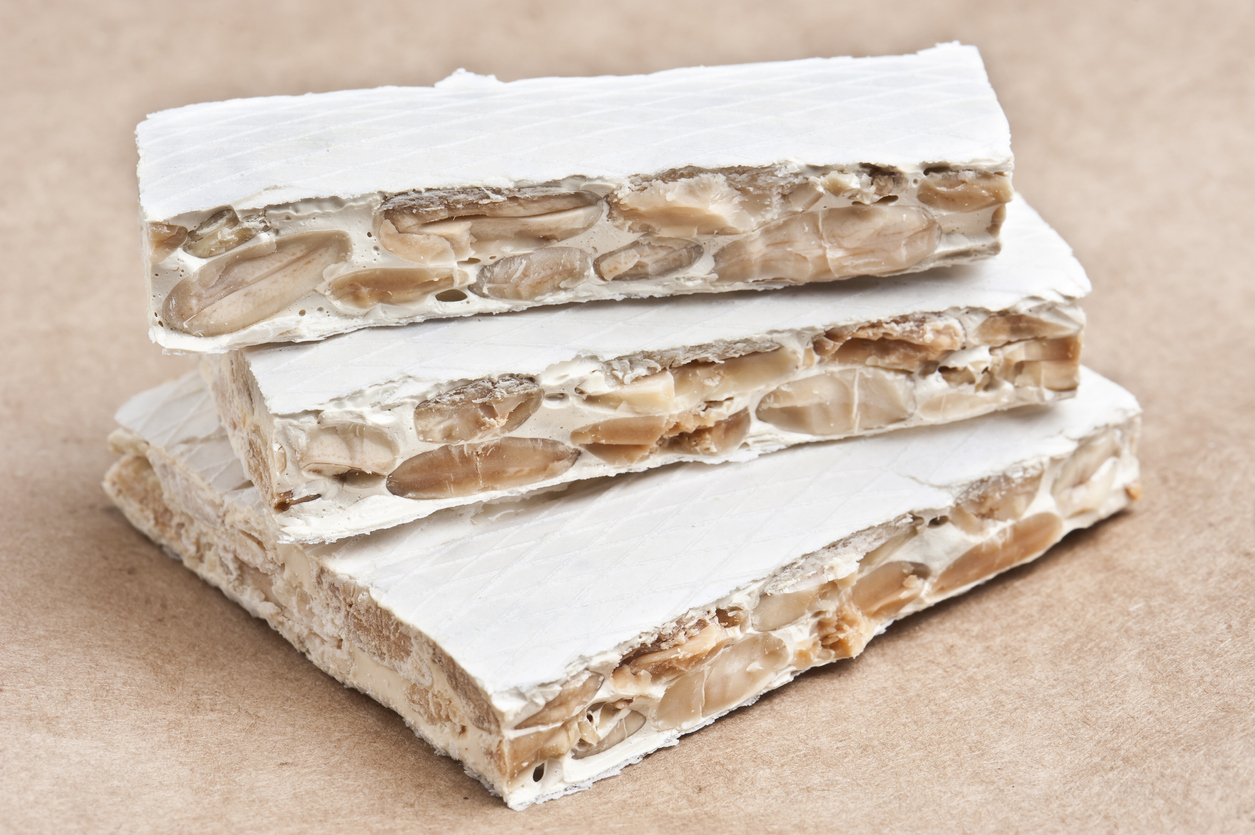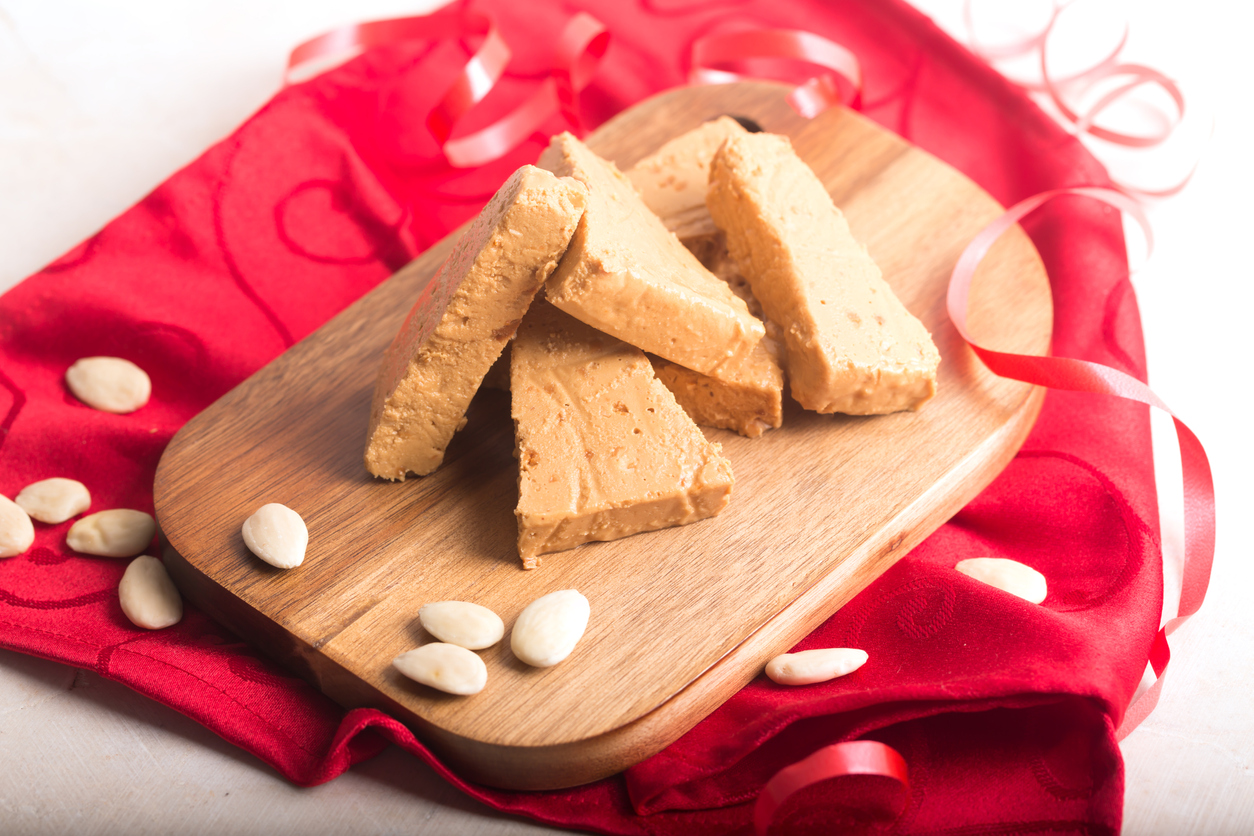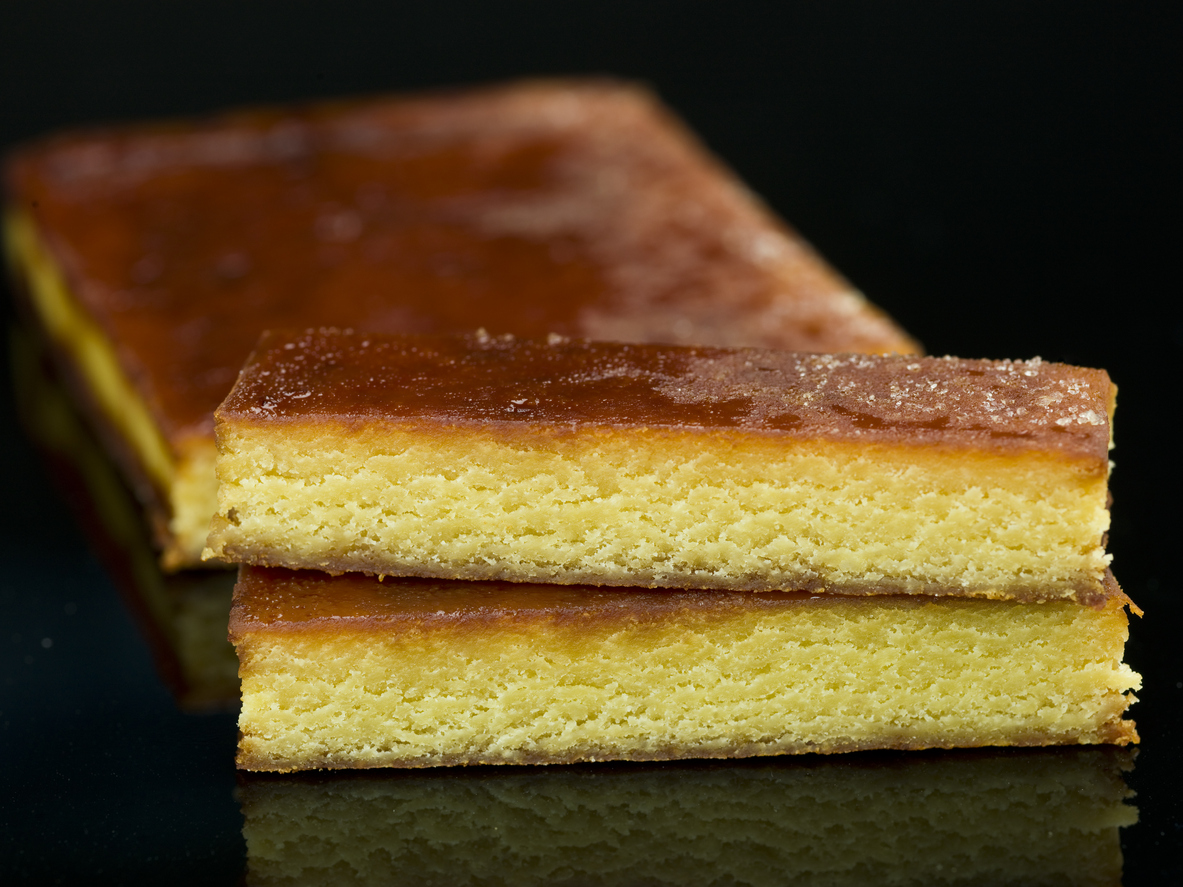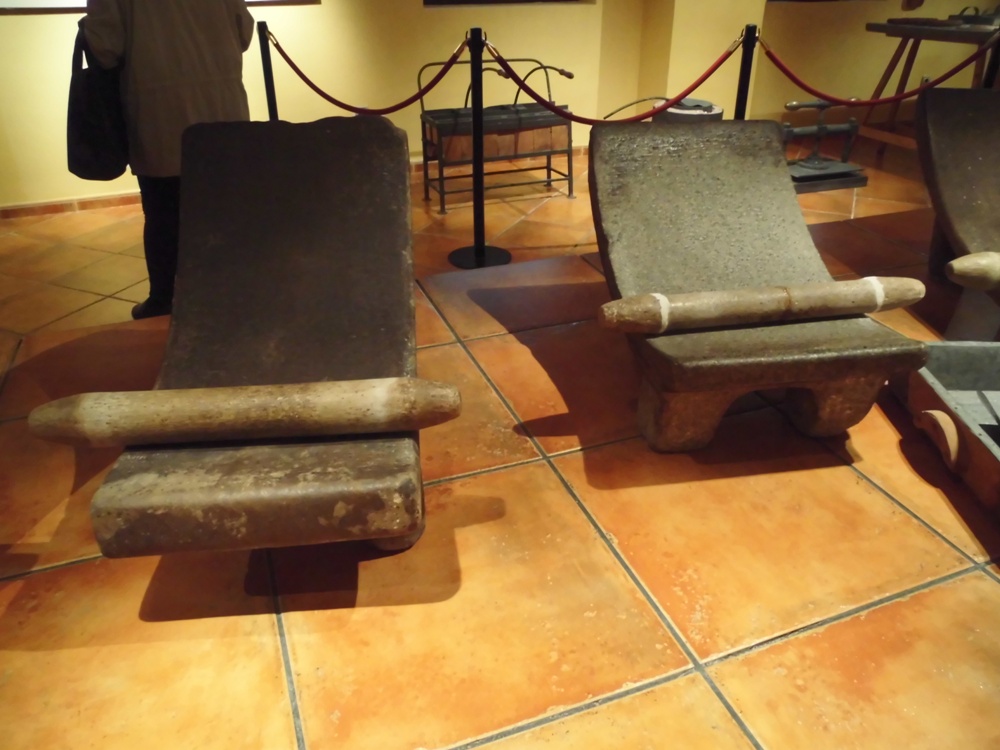 Juanmonino
Juanmonino
Turrón, Spain‘s traditional holiday sweet, is as iconic here as the Reyes Magos (Three Wise Men) who bring presents to children each 6 January. Spaniards won’t ask you where you spend Christmas, they will say, “where do you eat your turrón“? If it’s anywhere outside Spain, they may well give you a box to take with you so you don’t miss out. It’s that essential.
Turrón is often translated as nougat, which is basically correct, but can be misleading if you are only familiar with the tradition German or Viennese, a very soft concoction of finely ground hazelnuts, cocoa and cocoa butter which melts in your mouth. Expecting something similar, I bit into my very first piece of turrón and nearly broke a tooth. (Actually, it must be said, the two Spanish varieties do come in both hard and soft; the basic ingredients are the same: egg white, honey, sugar and almonds, and the difference in the texture lies in the preparation.)
 VadimZakirov
VadimZakirov
This sweet also has a very long history, which can be traced back to a 10th-century Baghdad. It became popular all over the Arab world, and when the Moors conquered the Iberian Peninsula in the Middle Ages, establishing the domain of al-Andalus, they left behind not only stunning architecture but also culture and food – including turrón, which by the 15th century had ironically already become well established as an essential part of every Yuletide celebration.
Two cities, not far apart from each other, have become the center of turron production: the cities of Alicante and Jijona (spelt Xixona in Alicante dialect), the former known for the hard variety and the latter for the soft. The latter is also home to a Museo del Turrón (below), which shares a building with the two most famous factories, El Lobo and 1880, with a tradition dating back to 1531.
 Juan Monino
Juan Monino
As a town of around 7,500 inhabitants, in addition to the turrón museum Jijona offers visitors some pretty little streets as well as the ruins of a mediaeval castle – and you might also want to consider a short hop south to the village of Bisot, home to the Canalobre Caves, their highlight a cathedral-like vault soaring 70 metres (230 feet) high and illuminated with coloured lights. Then, too, Jijona is surrounded by steep, picturesque valleys which produce an abundance of wildflowers – which in turn attract bees, making the honey needed for turrón. Plus the soil and climate of both Alicante and Jijona favour the growth of almond trees, which is why almonds are used here – whereas in other countries like Italy and France hazelnuts and other nuts are added.
For the hard white version (top photo), almonds are used either whole or in rough chunks, roasted embedded in the honey/egg white mixture. The honey is melted and mixed with the beaten egg whites and almonds, then poured into rectangular forms and left to harden. The resulting slabs are cut into squares and sold in distinctive, rather decorative boxes. Jijona’s soft brown turrón (second photo) uses the same ingredients, but the almonds are ground into a paste – so your teeth are less in danger! And actually, there’s a third variety, also soft: turrón de yema uses egg yolks instead of whites, along with a dash of lemon zest and cinnamon – its flavour is reminiscent of marzipan.
 Inka Piegsa-Quiscotte
Inka Piegsa-Quiscotte
It might appear that, given the few and simple ingredients, it’s very easy to make turron (and online there are plenty of recipes and YouTube videos that can guide home cooks). But a visit to the museum will give you an idea of its complexity. Although these days machines are used, much of the process is still by hand. You’ll be fascinated by the huge wooden grinders, which in centuries past needed two people to turn constantly until the almonds were just right to be used for the paste. Then followed another chopping and kneading process to remove most of the oil from the almonds. Again, this was done by hand on wooden slabs resembling huge washboards (above). The removal of the oil is also responsible for the golden color of the paste. The wooden forms into which the mixture was finally poured to set were all hand carved. Most of these traditional tools for turrón-making became obsolete with the progress of technology.
The typical varieties have been adapted to changes in taste and nowadays, some turrones also contain chocolate powder and cocoa butter or even chopped candied fruit. But the traditional forms remain the overwhelming favourites. So Happy Christmas, and here’s hoping you get to sample this uniquely Spanish treat this holiday season – and next year in Alicante!
More info in English: AlicanteTurismo.com.
https://youtu.be/c7h7_IKkytY
Inka Piegsa Quiscotte is an attorney turned travel writer/photographer, currently based in Alicante, Spain, whose work has appeared at GoNomad, GoWorldTravel, EuropeUpClose, and BBC Travel. Her blog GlamourGrannyTravels.com is dedicated to female baby boomers who love to travel in style and comfort.
.

